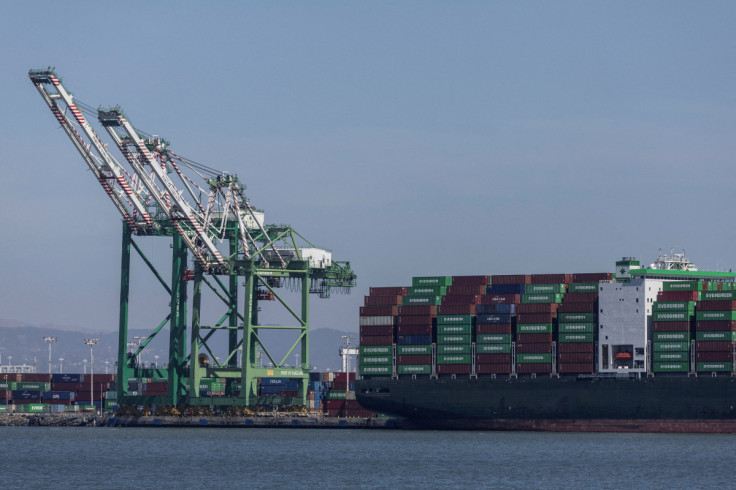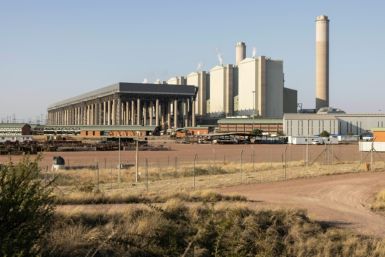Trade Seen Boosting US Economy In Q3; Growth Details Likely Soft

U.S. economic growth likely rebounded in the third quarter, driven by a shrinking trade deficit, but that would grossly exaggerate the economy's health as the Federal Reserve's aggressive interest rate increases dampen demand.
The Commerce Department's advance third-quarter gross domestic product on Thursday is expected to show underlying demand in the economy flat last quarter amid a slowdown in consumer spending and moderate growth in business investment.
Still, the anticipated rebound in growth after two straight quarterly declines in GDP would be further evidence that the economy was not in a recession, though the risks of a downturn have increased as the Fed doubles down on rate hikes to battle the fastest-rising inflation in 40 years.
"The devil is in the details, and if you strip out trade, GDP will look a lot weaker than the headline number suggests," said Ryan Sweet, a senior economist at Moody's Analytics in West Chester, Pennsylvania. "We don't have a recession in our baseline, but the risks are increasing; we're going to need a little bit of luck."
According to a Reuters survey of economists, GDP growth likely rebounded at a 2.4% annualized rate last quarter after contracting at a 0.6% pace in the second quarter. Estimates ranged from as low as a 0.8% rate to as high as a 3.7% pace.
The trade deficit appears to have narrowed sharply in part as slowing demand curbed the import bill. Exports also increased for much of last quarter. Economists estimate that the smaller trade gap added as much as 3.0 percentage points to GDP growth.
The data will have little impact on monetary policy, with Fed officials watching September personal consumption expenditures price data and third quarter labor cost numbers due on Friday, ahead of their Nov. 1-2 policy meeting.
The U.S. central bank has raised its benchmark overnight interest rate from near zero in March to the current range of 3.00% to 3.25%, the swiftest pace of policy tightening in a generation or more. That rate is likely to end the year in the mid-4% range, based on the Fed officials' own projections and recent comments.
Wild swings in trade and inventories were behind the contraction in GDP in the first half of the year.
SLOWER CONSUMER SPENDING
Growth in consumer spending, which accounts for more than two-thirds of U.S. economic activity, is expected to have slowed to about a 1.0% rate from the April-June quarter's 2.0% pace.
Consumer spending is being supported by a strong labor market, which is driving up wages. The Labor Department is expected to report on Thursday a modest increase in the number of people filing new claims for unemployment benefits last week, according to a Reuters survey.
Initial claims for unemployment benefits have remained significantly low despite reports of companies, mostly in the interest rate-sensitive sectors of the economy, laying off workers. A modest rebound in business spending on equipment is predicted after it contracted in the second quarter.
With consumer spending softening and import growth slowing, inventories are a wild card. Some economists believe inventories, which were the biggest drag on GDP in the second quarter, had a neutral impact on output last quarter. Others still expect them to have remained a burden on growth.
Final sales to private domestic purchasers, which exclude trade, inventories and government spending, are expected to have been flat, a sign that higher borrowing costs are starting to slow demand. This measure of domestic demand increased at a 0.5% rate in the second quarter.
Investment in the housing market, which has been hardest hit by higher borrowing costs, is expected to have dropped for the sixth straight quarter. A rebound is expected in government spending after five consecutive quarters of decline.
"We are starting to see the impacts of tightening come through on the demand side in the housing sector, which in turn should suggest that the Fed will eventually see some of that slowing in inflationary pressures," said Rhea Thomas, a senior economist at Wilmington Trust in Philadelphia.
While the pace of inventory accumulation has slowed in recent months, economists worry that a rising stockpile of unsold goods could trigger a recession. Retailers are finding themselves saddled with excess merchandise, because of easing supply chain bottlenecks and ebbing demand for goods, forcing them to offer discounts, which economists say may not be enough.
Business inventories increased at a rate of $110.2 billion in the second quarter, with economists expecting more or less a similar pace of accumulation last quarter. Inventory runoffs have been responsible for a number of recessions.
"Inventory runoffs do not get a whole lot of attention, but that's where I think the weak spot is," said Sung Won Sohn, a finance and economics professor at Loyola Marymount University in Los Angeles. "If inventory runs off, production declines, that hurts employment and therefore spending. It happened a number of times in the postwar period, and I think that is what is happening right now."

© Copyright Thomson Reuters 2025. All rights reserved.





















